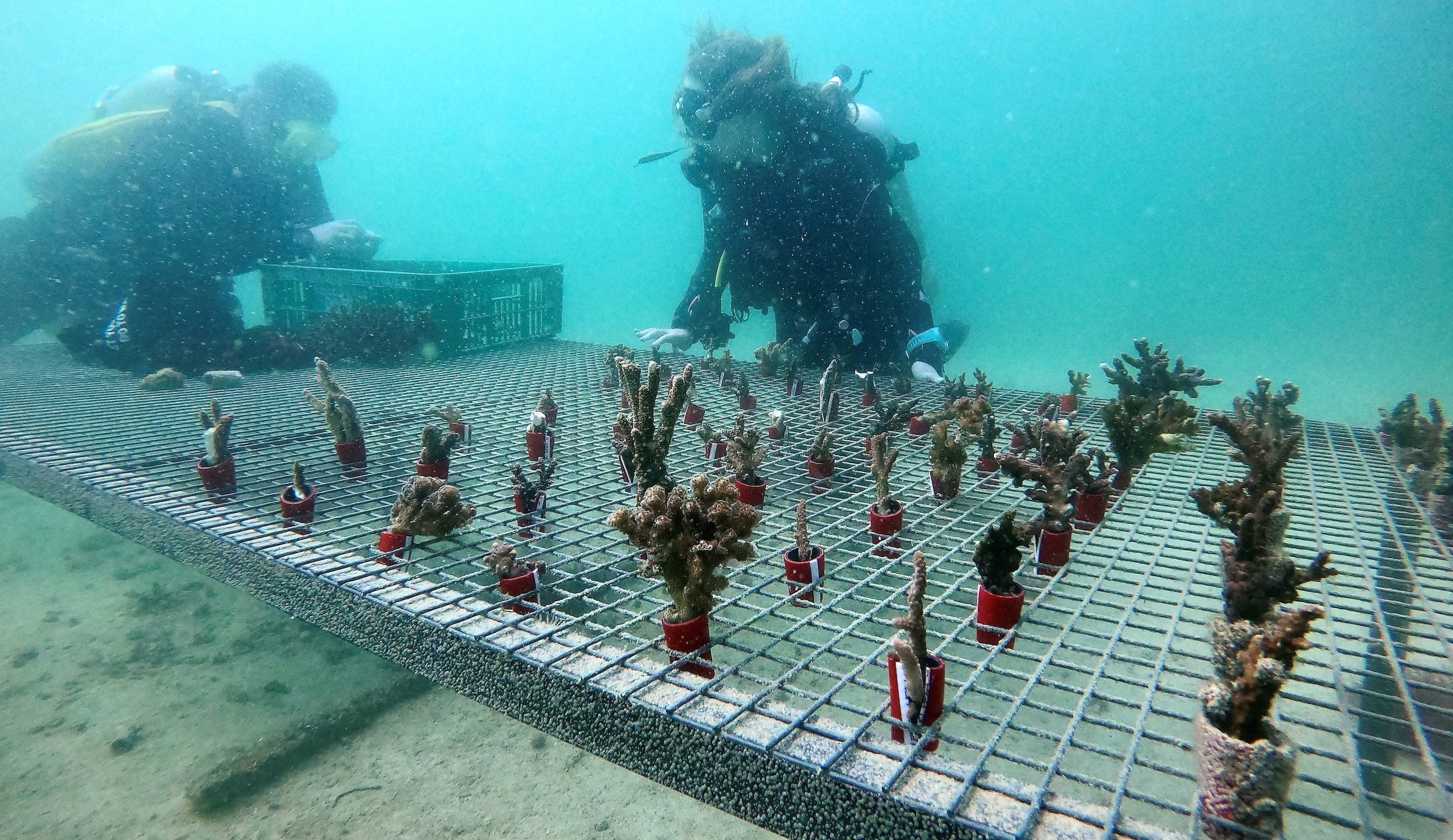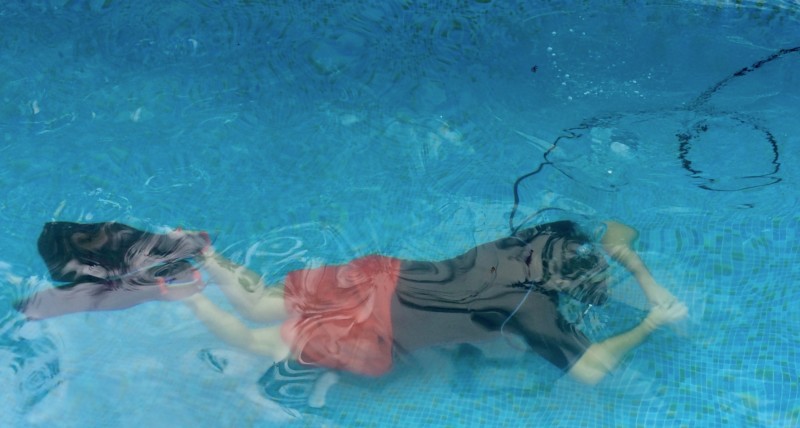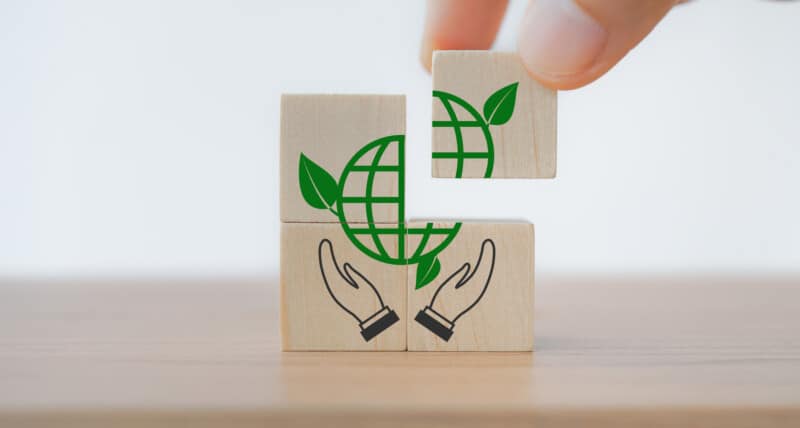For centuries human beings went about the business of achieving “progress” with little regard for the planet and the damage they were doing to it. Fortunately though, that has changed in recent decades and the current generations are hard at work trying to undo the misdeeds of their ancestors to rectify situations while rectification is still an option. On dry land, the slowing of deforestation and planting of new trees is a visible manifestation of this, but there is a similar situation under the sea, where the ongoing damage to coral reefs need to be addressed.
The world at large is now aware of how the marine environment has been damaged by decades of thoughtless human actions, from overfishing and damaging coastal construction to the islands of plastic waste that is wreaking havoc on marine ecosystems. The next stage of our development must be to right the wrongs and that is exactly what is happening here.
In addition to repairing damaged reefs, building artificial reefs is becoming an important tool to help nature redress the balance. At Freestyle Divers we are playing our part in this through Project REEFrame. This is a community project based in the UAE, focused on helping the local coral reef protection of ecosystems.
Diving and reef damage are, sad to say, traditionally interlinked, but the new generation of divers has been galvanised by the knowledge of its role in reef destruction and is now determined to be a force for good.
Artificial reefs have been deployed by humans for thousands of years, mainly by fishermen to aggregate fish and make them easier to catch. If done correctly, they can also become the backbone to extend coral coverage to create larger (or new) reef ecosystems.
Studies have shown that not all approaches are good for the environment and the Osborne Reef off the coast of Fort Lauderdale, Florida, is a case in point. Thousands of vehicle tyres were sunk to create the reef, which is now widely considered to be an ecological diaftersaster lethal chemicals leached from them into the water. The question arises, then, of how to make an artificial coral reef.
How To Make An artificial coral reef
Our marine biologists spent nearly two years perfecting the best approach on how to make an artificial coral reef, including selection of the best eco-friendly materials, developing the most robust construction methods to survive the power of ocean storms, and the creation of the best structural shapes to provide habitat for corals and the other creatures that inhabit a coral reef.
The basic principle is easily understood using the example of shipwrecks. While a ship does not belong on the seabed, once it is there, nature immediately sets about transforming it and making it useful. “Nature abhors a vacuum”, as the old saying goes, and a wreck soon becomes populated with different species of hard and soft corals, while the shelter its shape provides is gleefully embraced by fish and other forms of marine life.
Coral cannot grow on sand; it needs a solid base on which to grow – ideally a rocky outcrop – but we can rescue broken bits of coral from the sand before they are covered and die, then providing them a stable base for them to attach to. By deploying artificial reefs, we provide nature with the foundations upon which coral can architect a new underwater city that will provide food, shelter and work for hundreds of other species.
We are working with the Ministry of Climate Change and Environment (MOCCAE), the Fujairah Environmental Authority (FEA) and Fujairah Genetics to restore coral reef ecosystems in the UAE and to help in the education of the adult and youth communities in this vital respect.
The Phase 1 site in the Al Faqeet marine protected area in Dibba, Fujairah, was deliberately located on bare sand, to create a new and biodiverse ecosystem in a virtually barren area. Two years down the line that area is home to some 100 identified species, plus several unidentified ones, and Phase 2 involves expanding the area to around 10 hectares, before moving on to even bigger and better things in Phase 3.
How You Can Help in Building Artificial Reefs
All the divers in our Reef Rescue team are formally trained on reef conservation and coral conservation, ensuring that their valuable contribution is in line with the goals of our science driven project.
Once trained, they build experience on coral propagation and working with artificial reefs, hand-in-hand with our marine biologists, physically contributing to the process while honing their skills and receiving training and guidance. Our volunteers love the opportunity to work hands-on, building from the theory they have absorbed, to deliver measurable positive impacts.
This fits very well within our company ethos because our aim is to produce confident divers, real divers with not just skills but awareness. We are not in the business of simply handing out certificates as a result of boxes ticked along the way. We want our divers to be a force for good, making a positive impact in the marine conservation world. In this way, participation goes hand in hand with sponsorship opportunities with the overall aim of restoring a thriving marine ecosystem in this part of the world.
The answer to the question of how to make an artificial coral reef, then, is this: everyone plays their part in whatever role they are suited to and prepared for.
This way, there is great personal satisfaction for all involved, safe in the knowledge that their efforts are greatly appreciated and play a real part in the success of the project.



